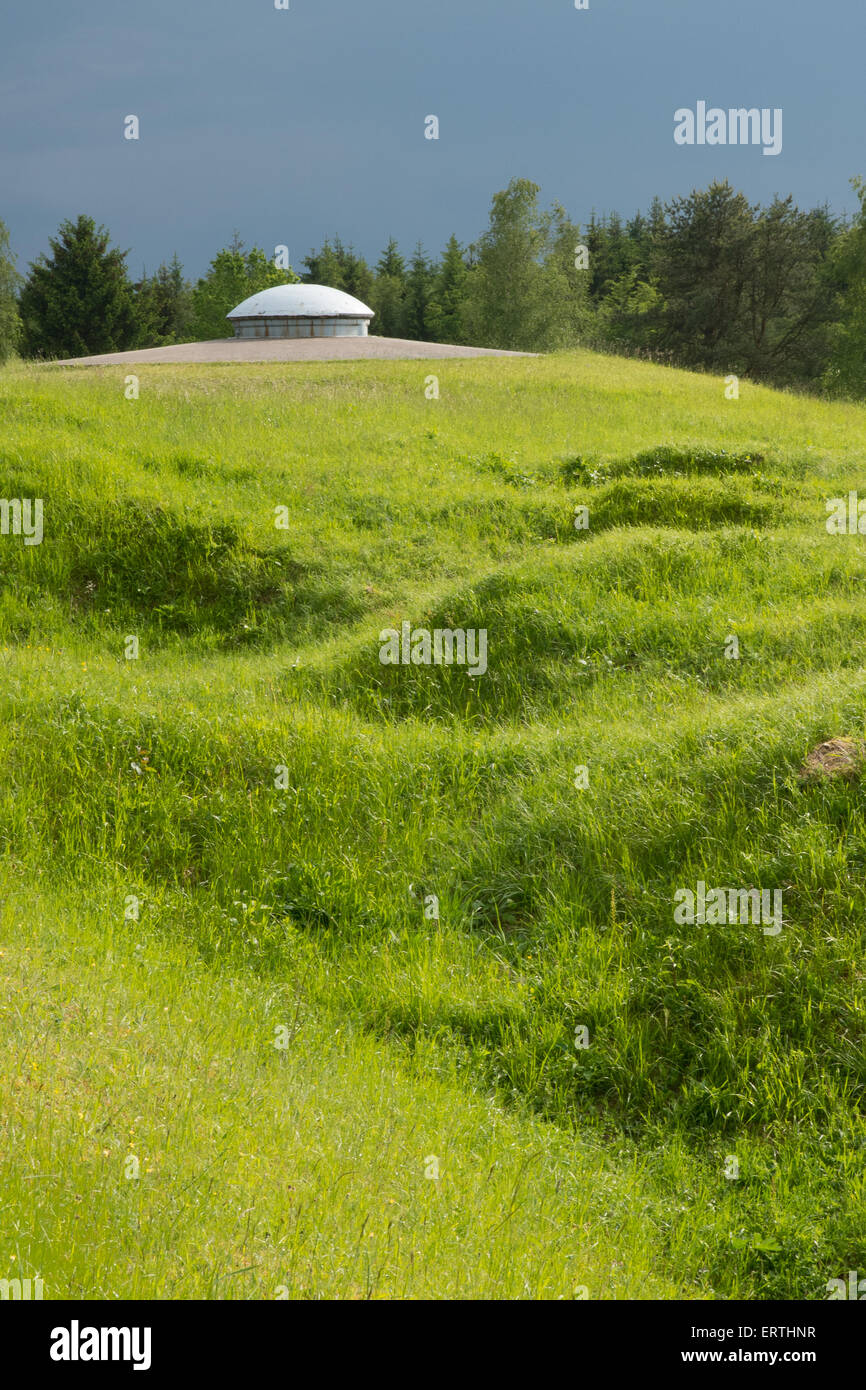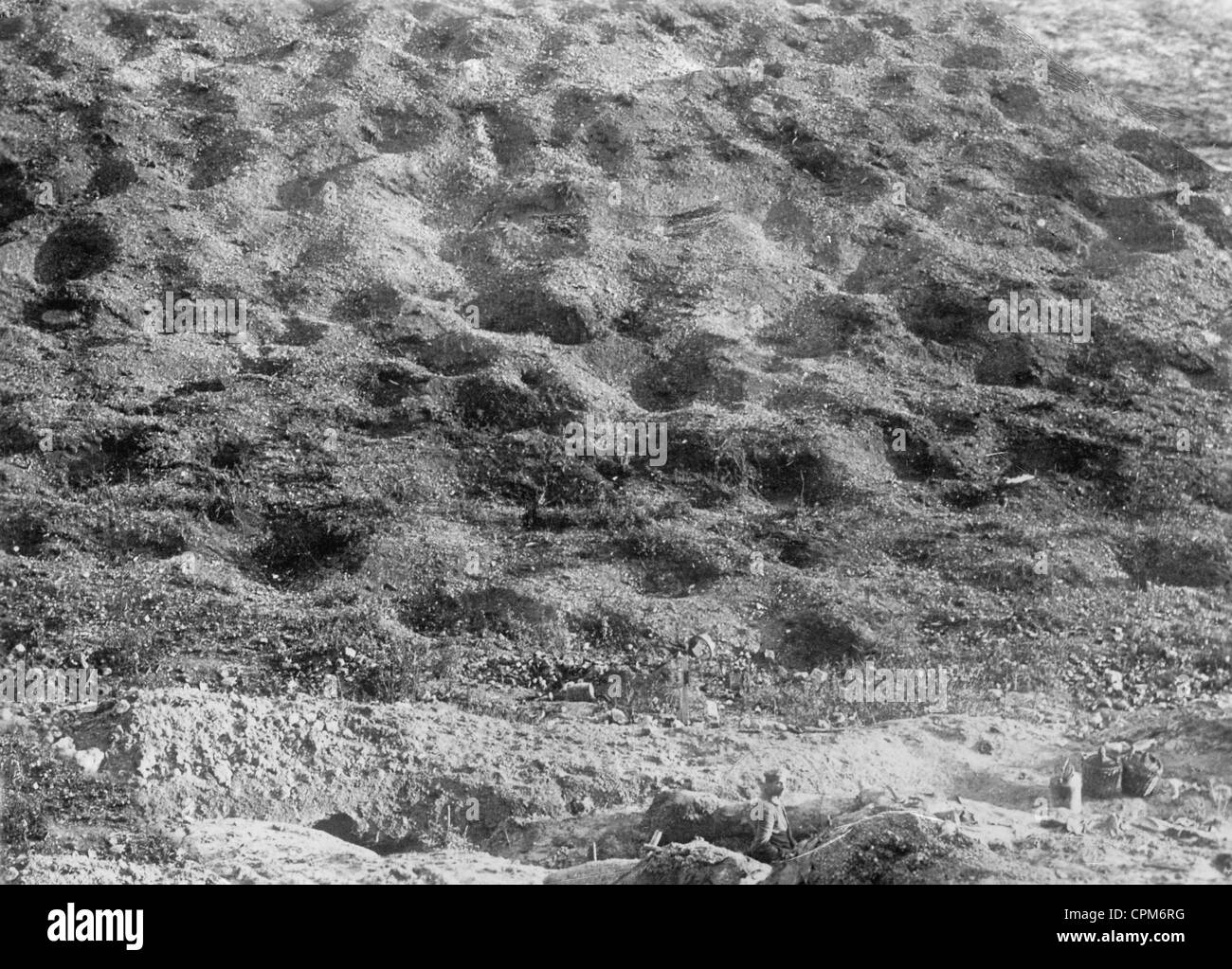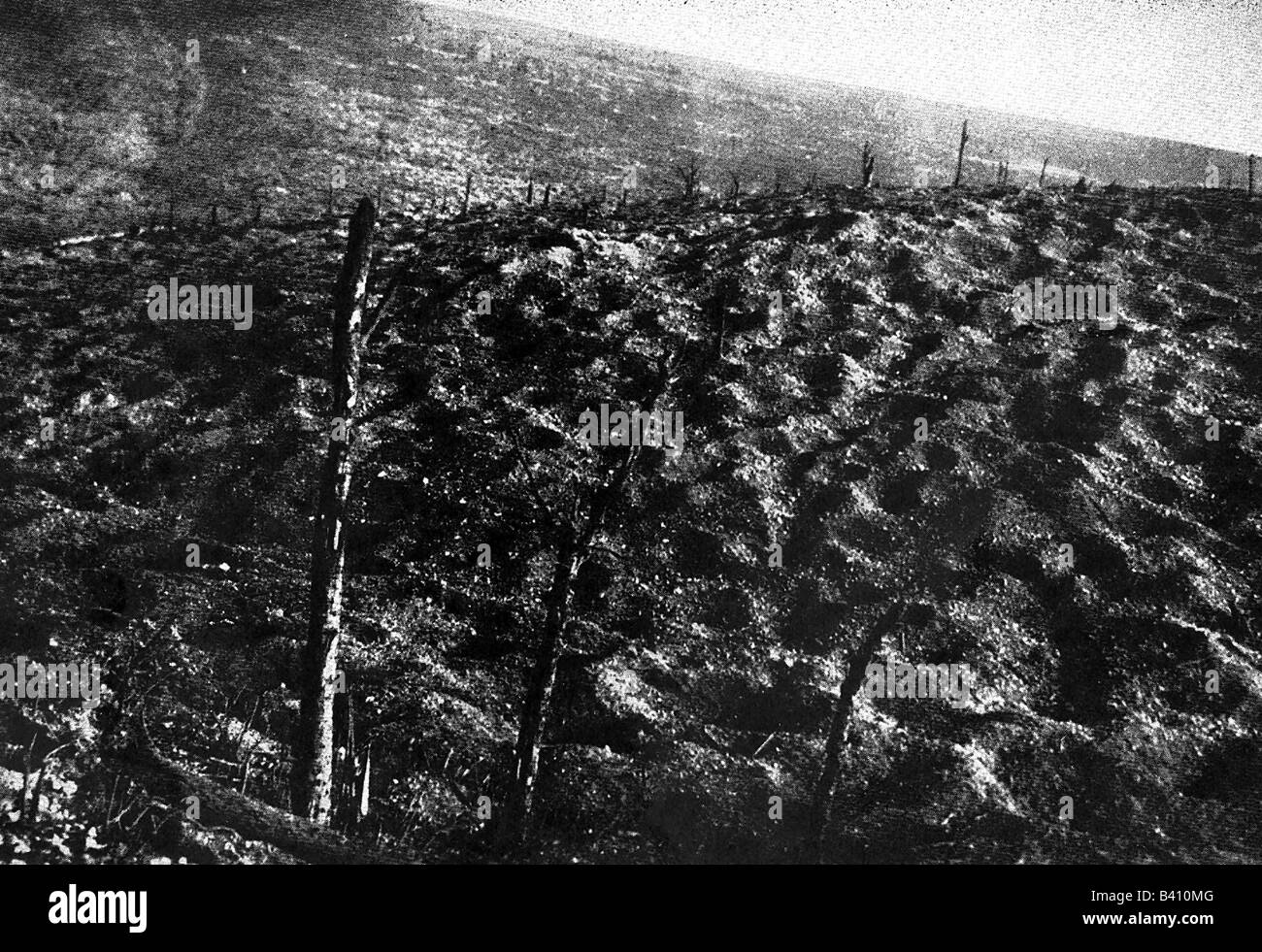

It is performed in GIS, from battle maps crossword Shooting canvas groups to available databases (DEM, geology, hydrography). The control of geographical and geomorphological conditions on the spatial organization of the First World War defenses of networks is analyzed from the Reims area, on the western front.

Cette approche témoignant de l'importance de la connaissance et de l'exploitation du terrain dans la guerre de position permet aussi de mesurer l'impact environnemental de la Grande Guerre (remuement des terres, pollutions des sols). Les réseaux de tranchées présentent une organisation ternaire emboitée en rideaux de défense et sont structurés en lignes et boyaux dont la logique répond non seulement à des critères topographiques multiscalaires (rôle des fronts de cuesta, des contre-pentes, des talus des voies de communication), militaires (crêtes de tir, portées de l'artillerie) et stratégiques. L'étude est réalisée sous SIG à partir de documents cartographiques datant de la Première Guerre croisés aux banques de données actuelles (MNT, géologie, hydrographie). S Le rôle des conditions géographiques et surtout géomorphologiques sur l'organisation spatiale des réseaux de défense de la Première Guerre mondiale est analysé à partir du secteur de Reims, sur le front ouest. In the field of heritage management, the detection, visualisation and protection at landscape-scale of what is often seen as “dark” heritage is expected to gain importance. As suitable data are becoming increasingly available, the study of prehistoric and historic conflicts will benefit across the discipline boundaries between archaeology and geomorphology.

Examples highlight the potential of high-resolution digital elevation models for the detection, mapping and quantification of conflict-related relief changes and thus for the understanding of conflicts. conflict-related mining and infrastructure). bomb craters and rubble mountains), conflict-related traces associated with military training and weapons testing facilities as well as, potentially, traces of conflict sustenance (e.g. These include defensive structures such as earthworks, primary and secondary traces of warfare itself (e.g. The application of high-resolution digital elevation models in investigating past conflicts can and should, however, encompass all geomorphological traces of conflict. While conflict archaeology has for a long time been almost synonymous with battlefield archaeology, the few papers explicitly discussing conflict geomorphology are mainly concerned with the impact of bombing on soil geomorphology. Conflict archaeology and conflict geomorphology, which are both young sub-disciplines within their scientific fields, have until now only touched upon a small part of the wide range of issues which they can encompass. Inter-group and inter-state conflict are one aspect of human behaviour which commonly causes such relief changes.

High-resolution digital elevation models, often derived from airborne lidar, are rapidly gaining importance in both archaeology and geomorphology, in particular where these two disciplines overlap in their interest in anthropogenic changes to the relief of the earth surface (“archaeogeomorphology”).


 0 kommentar(er)
0 kommentar(er)
